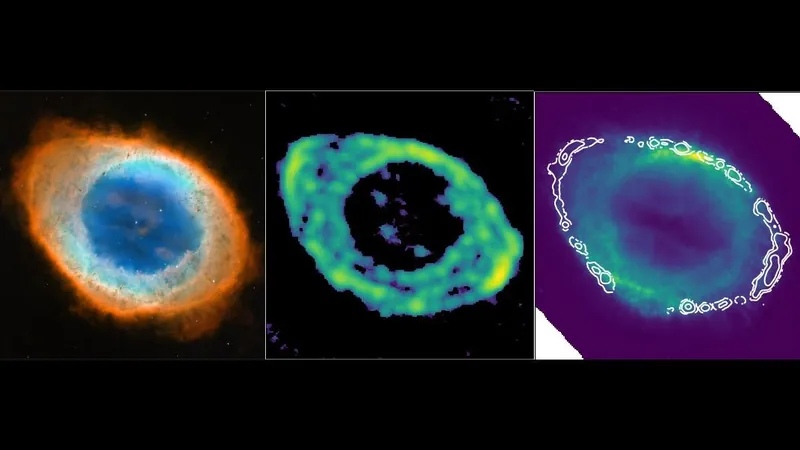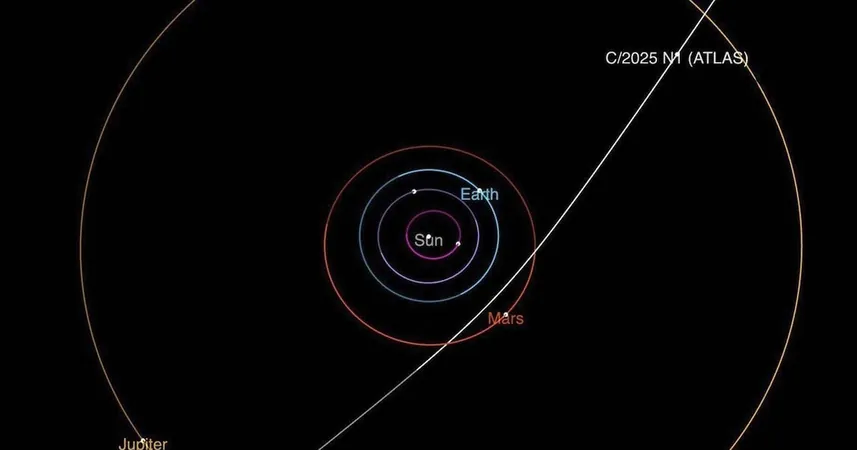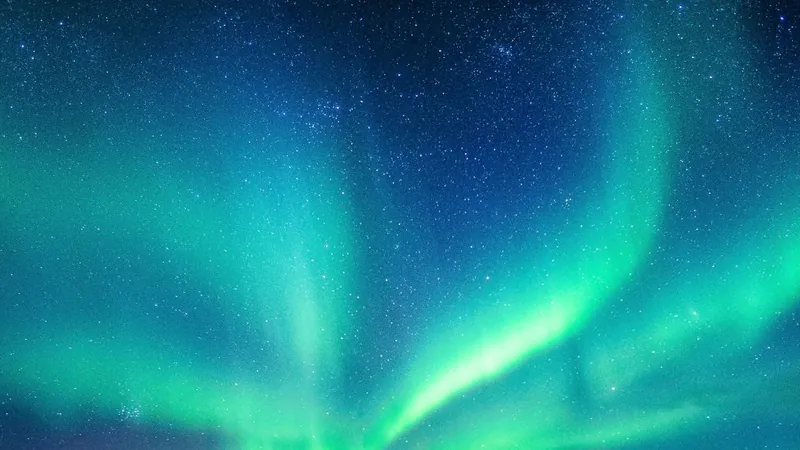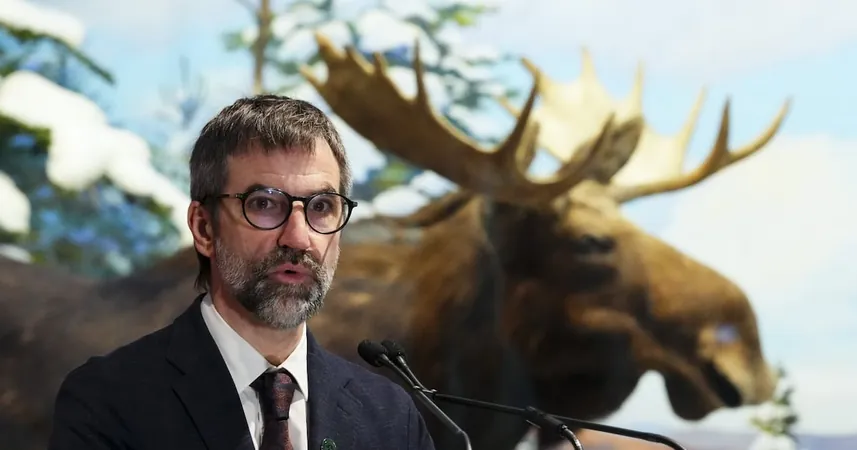
Revolutionary New Insights Into the Ring Nebula Reveal Its Astonishing True Shape!
2025-01-20
Author: William
Introduction
The Ring Nebula, one of the most iconic celestial objects, has captivated astronomers and sky-gazers alike for centuries. Located approximately 2,000 light-years away from Earth, this stunning remnant of a sun-like star showcases a mesmerizing smoke-ring appearance. However, an age-old question has lingered: is the nebula truly ring-shaped, or is its shape an optical illusion resulting from our vantage point in space?
New Observations and Insights
Recent groundbreaking observations have unveiled a treasure trove of information about the Ring Nebula. By closely examining the movement of gas molecules along its border, researchers have clarified its structure in incredible detail. Joel Kastner from the Rochester Institute of Technology shared exciting insights at the 245th American Astronomical Society (AAS) conference, revealing that the Ring Nebula takes on a barrel-like shape, with our perspective aligned directly along its poles.
"We're staring right down the barrel of it, which is really quite surprising to me—we're just lucky," said Kastner, emphasizing that these findings give us “a brand new view of an old astronomical friend.”
Understanding Planetary Nebulas
These revelations are pivotal in understanding the formation of complex planetary nebulas, which intriguingly have no actual ties to planets. Their nomenclature arose from the resemblance they exhibited when observed through the small telescopes of early astronomers.
Historically, it was believed that planetary nebulas were simple, spherical entities housing a single dying star at their core. "It begs the question: how does a spherical star create such intricate and delicate non-spherical structures?" inquired astronomer Roger Wesson from Cardiff University.
The Methodology Behind the Research
To answer this question, Kastner and his team utilized the Submillimeter Array (SMA) in Hawaii, which consists of an array of radio dishes that provided high-resolution imaging of the Ring Nebula. They meticulously tracked the velocities and locations of carbon monoxide gas molecules emitted by the dying star that formed the nebula around 4,000 years ago. These movements allowed scientists to render a detailed 3D model of the nebula—something that is nearly impossible to achieve through traditional methods used by powerful telescopes like Hubble and James Webb.
Confirmations and Discoveries
The new findings not only confirm the nebula’s ellipsoidal structure but also place the stellar remnant, known as a white dwarf—the tiny white dot at its center—exactly where astronomers predicted it should be. "That was not a foregone conclusion," Kastner remarked. The slight off-center appearance of the white dwarf in many telescope images may result from our viewing angle and the misaligned "poles" of the nebula rather than its actual position.
The Role of a Companion Star
Moreover, captivating images from the James Webb Space Telescope highlighted concentric arcs just outside the primary ring, forming every 280 years. This remarkable periodicity has led astronomers to speculate the presence of an unseen companion star, which likely orbits the white dwarf at a distance similar to that of Pluto from the Sun. This hidden star may have played a crucial role in sculpting the complex structure of the nebula.
Kastner and his team also observed intriguing “holes” within the nebula, attributed to rapid, youthful outflows expelled by this enigmatic companion star. "The presence of a stellar sibling to the central star will fiddle badly with the simple, one-star scenario that forms these nebulas," Kastner highlighted, indicating a potential paradigm shift in the way we understand planetary nebula formation.
Conclusion
This latest research not only enhances our knowledge of the Ring Nebula but also opens up new avenues in celestial studies. Keep your eyes peeled for more spectacular discoveries that could reshape our understanding of the universe!









 Brasil (PT)
Brasil (PT)
 Canada (EN)
Canada (EN)
 Chile (ES)
Chile (ES)
 Česko (CS)
Česko (CS)
 대한민국 (KO)
대한민국 (KO)
 España (ES)
España (ES)
 France (FR)
France (FR)
 Hong Kong (EN)
Hong Kong (EN)
 Italia (IT)
Italia (IT)
 日本 (JA)
日本 (JA)
 Magyarország (HU)
Magyarország (HU)
 Norge (NO)
Norge (NO)
 Polska (PL)
Polska (PL)
 Schweiz (DE)
Schweiz (DE)
 Singapore (EN)
Singapore (EN)
 Sverige (SV)
Sverige (SV)
 Suomi (FI)
Suomi (FI)
 Türkiye (TR)
Türkiye (TR)
 الإمارات العربية المتحدة (AR)
الإمارات العربية المتحدة (AR)